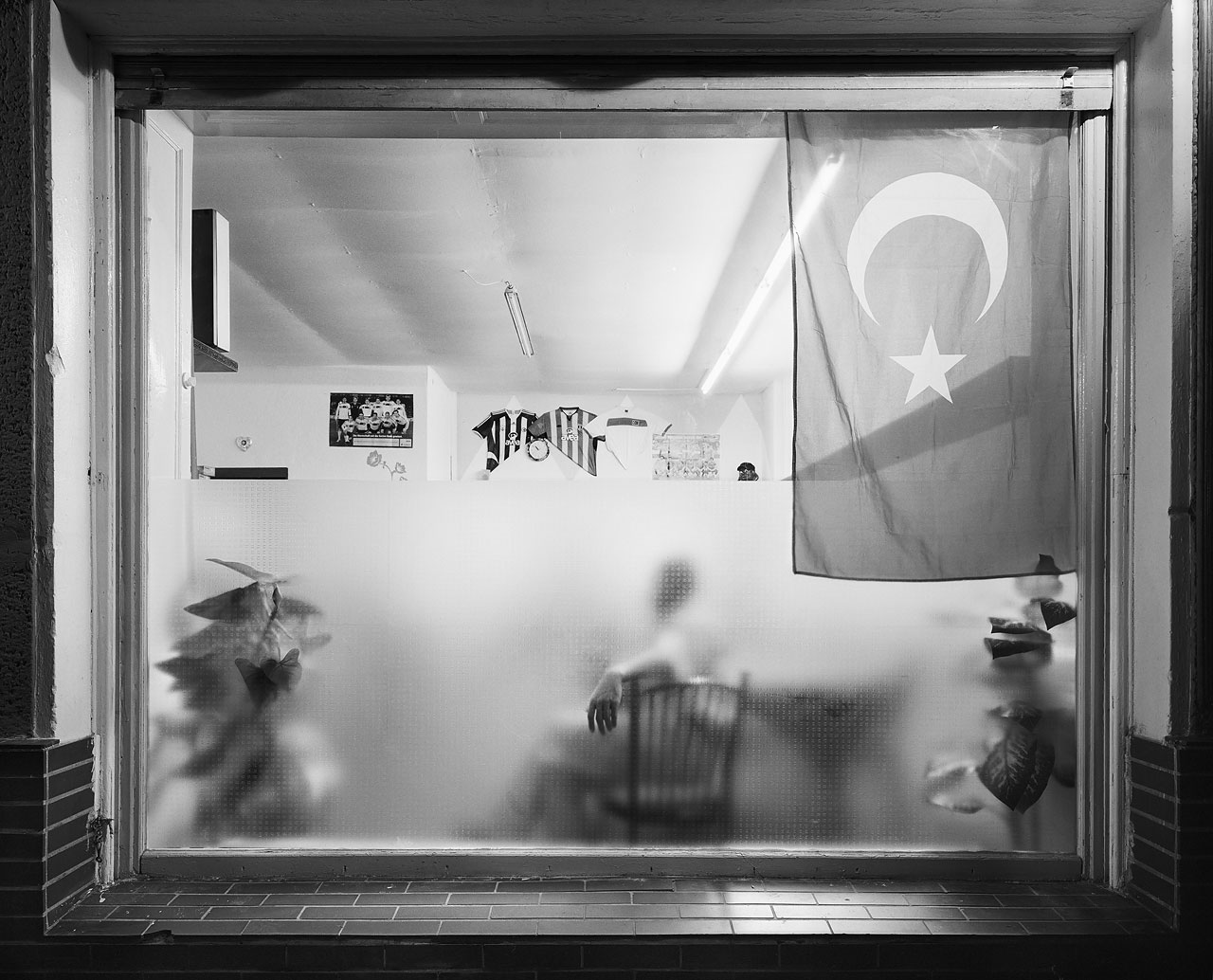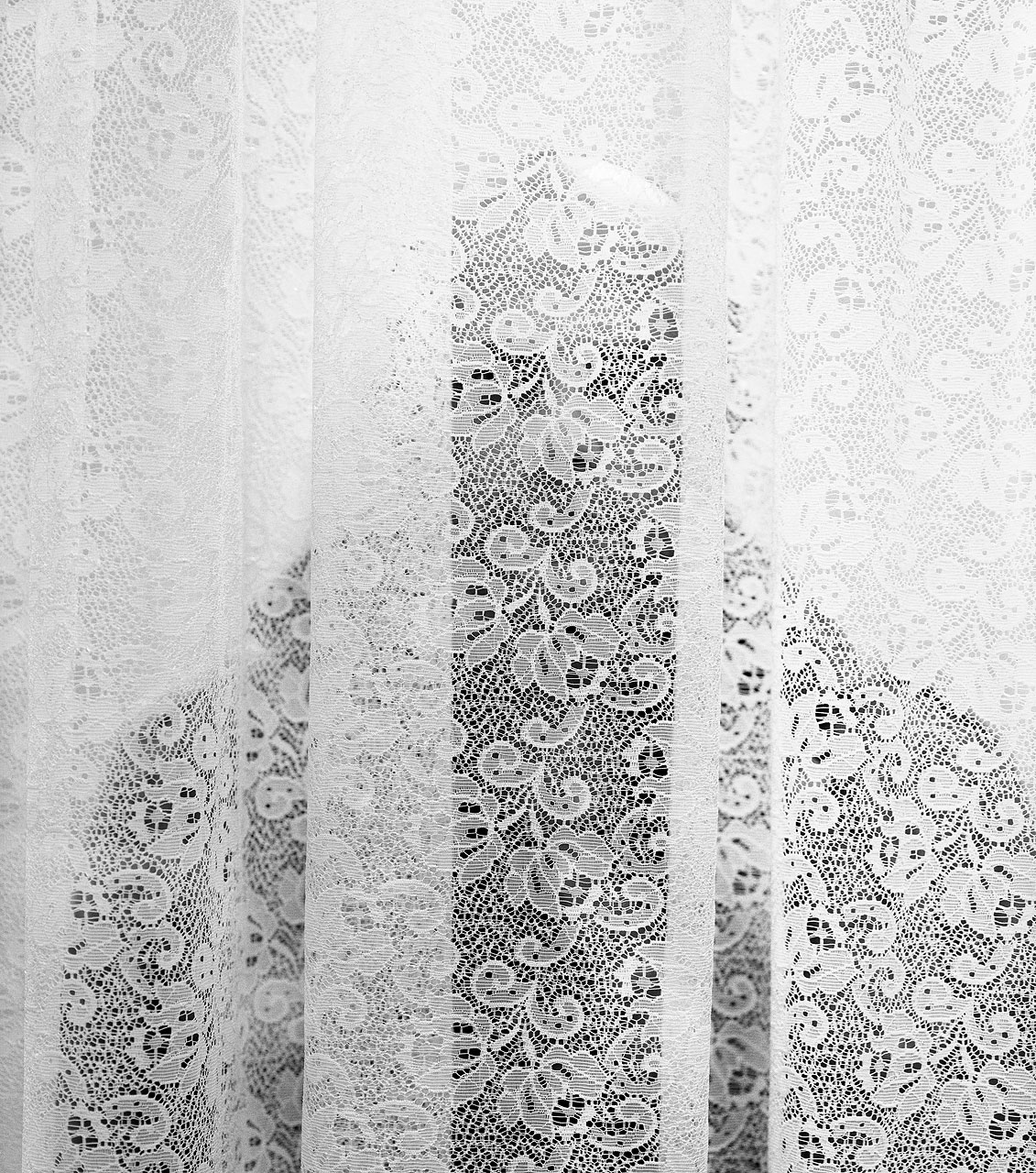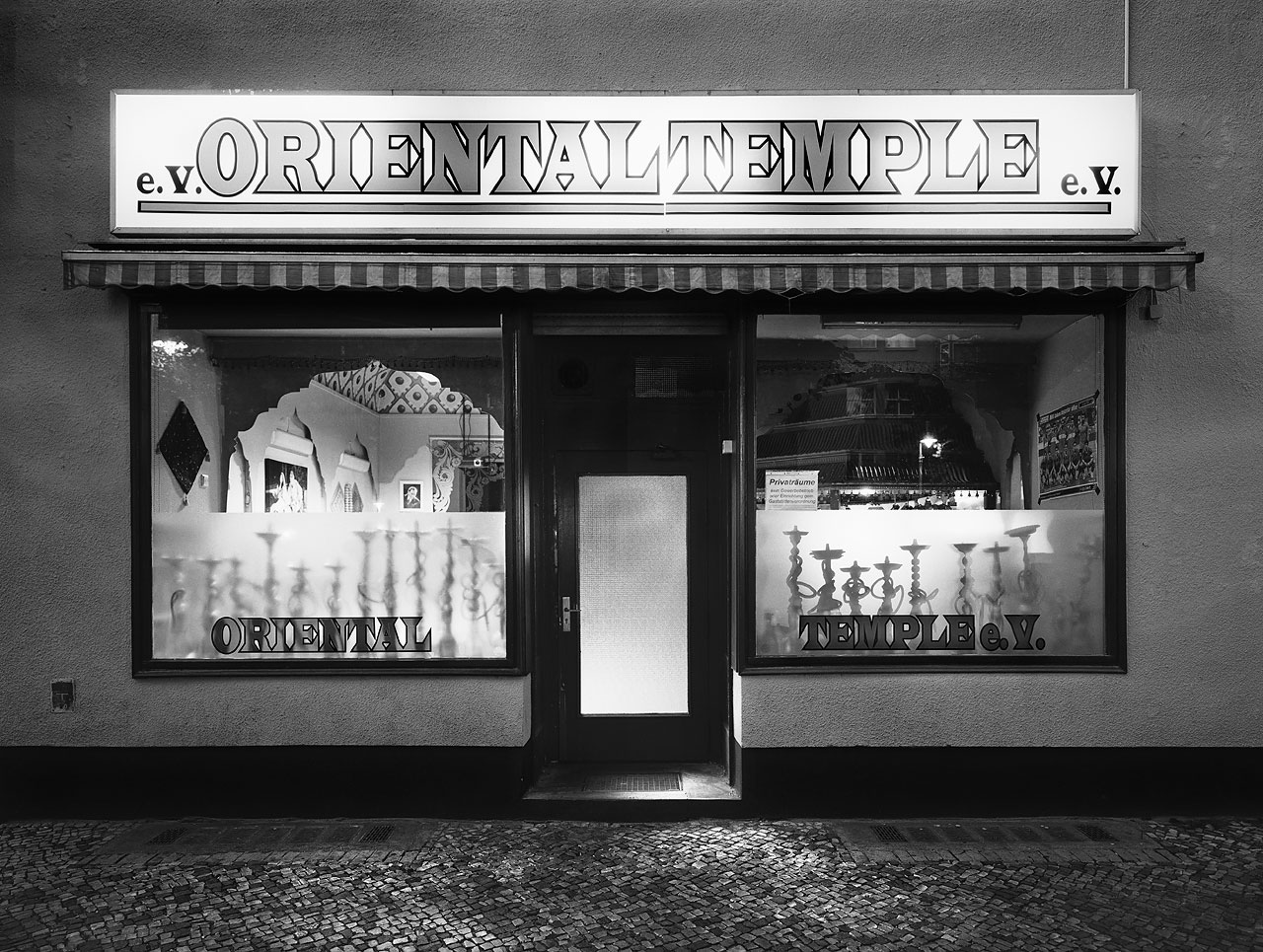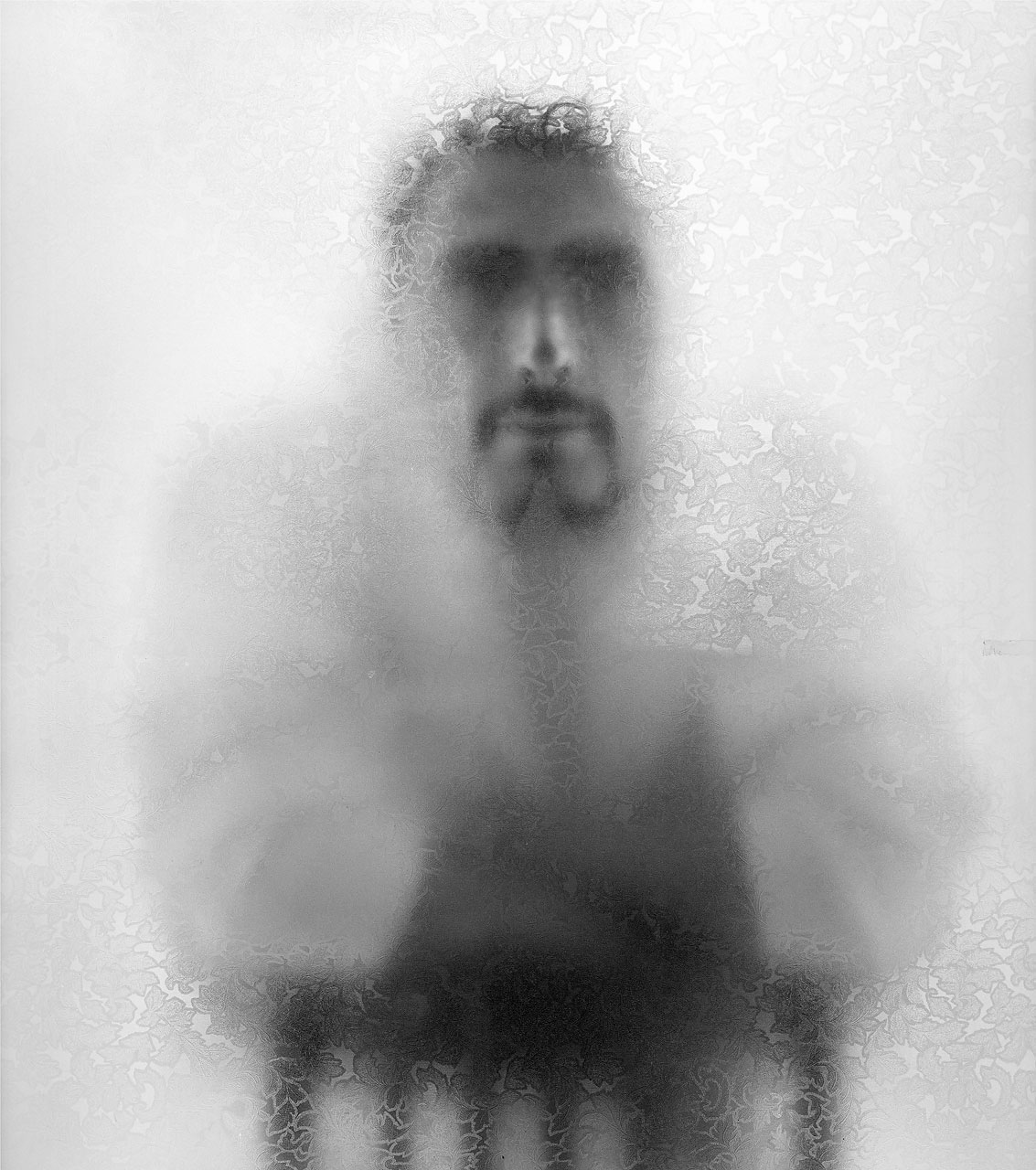Free Choice / Conceptual Photography | Nominee
Loredana Nemes
Berlin/Germany www.loredananemes.de
beyond





Concept
Berlin at night. I explore the masculine world of Turkish, Oriental or Arab cafs in Kreuzberg, Neuklln and Wedding. Places which would normally be off-limits to me - not only as a woman, but also as someone not belonging to any of these ethnic groups.
Alongside the stringently composed exposures of these mysterious places from outside, which appear as strange and brightly illuminated showcases, are portraits of the guests of these cafs, astonishing close-ups of menÕs faces, mistily-veiled and expressive. While I remain outside with my Linhof plate camera, the chosen subjects pose behind the characteristic opaque glass or net curtains typically employed for preserving privacy in these establishments. The outcome of this dialogue is a series of images that revealingly illustrate our cultural and visual limits.
A photographer who sets up a Linhof plate camera on a tripod outside a Turkish caf attracts attention, particularly when this photographer is a woman. This is why I first shot the exterior, the facade, the door and the windows. If words were exchanged and I was given permission, I made the portraits of one of the men inside, seen through the opaque pane of glass or a net curtain. It is not a portrait in the classical sense. It is much more a ghostly apparition that depicts the essence of a different and unfamiliar culture and leaves both the subject portrayed and the viewer feeling slightly more unsettled. WhatÕs more, it is also a portrait of a veiled man.
What, amongst other things, reinforces the simultaneously fascinating and eerie effect of these pictures, the views of the windows and, even more so, the portraits, could well be the depth and fine rendition of textures in the photographs that is first made possible by working with a negative format of 10x13 cm. One can see even the tiniest spots of dirt on the window panes, yet simultaneously see nothing of what is actually there to see. The photographs reveal much less about the cafs and their guests than they do about us, the outsiders and voyeurs, and our latent xenophobia and projected fears.
At the same time, āBeyondŌ is a photographic experiment that sounds the depths of visibility. The veiling prevents the eye from seeing clearly and the partially obscured view through the window acts as a further lens. This, coupled with the voyeurism of the night in what is, in effect, both a neighbourly encounter and a political statement, is a piece of photographic eye-candy I can truly enjoy.

